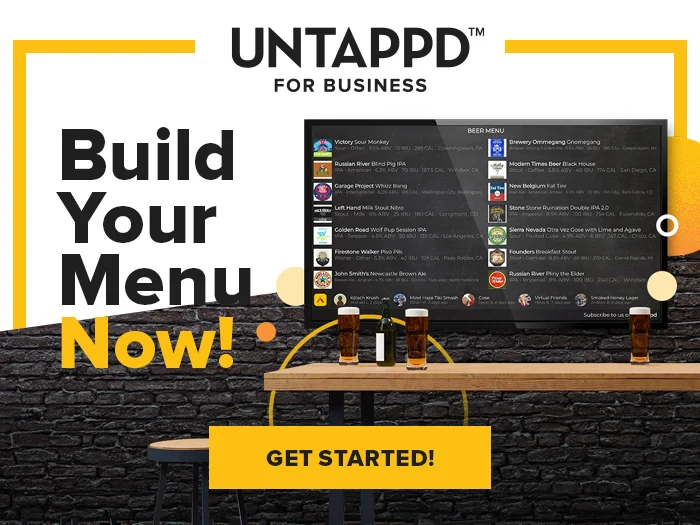
You’re a business owner and you are about to open your own restaurant, bar, brewery, or brewpub. You’ve gone through all the legwork of building the best business plan, securing investment, finding the perfect location, developing your brand and logo, designing the interior and exterior, planning the menu, and dealing with millions of other little details.
You can see the finish line looming in front of you with that grand opening datecircled on the calendar. And while a grand opening does seem like the grand plan here, have you considered a soft opening?
If you’re not even sure what a soft opening is, that’s totally fine because we’re here to help.
Consider a soft opening another weapon in your arsenal. It’s a chance to sharpen your knives (literally and figuratively), hone your operations, generate early buzz, and receive consumer feedback before you even open your doors.
If you haven’t already, here are the reasons you should consider a soft opening for your establishment.
What We’ll Cover in This Piece:
What Is a Soft Opening? And How Is it Different from a Grand Opening?

Photography courtesy of Alex Haney | Unsplash
A soft opening is kind of like a test drive for your establishment. You invite a select number of folks to attend a special event that offers a preview of your place. During that one night you can test out the kinks in your operations, menu, service, and logistics, while also collecting some information on the customer experience. Plan one several weeks before your official grand opening to learn valuable information about your operation.
While soft opens aren’t a requirement, they are an invaluable business tool.
Why Should I Try a Soft Opening?

Photography courtesy of Louis Hansel | Unsplash
There are several advantages to running a soft opening:
- Survey Your Staff – You get the chance to see your staff in action and how they work together. Can improvements be made? Do a few people need to learn the menu better? A soft opening gives your staff the time to fully prepare.
- Generate Attention – Help develop buzz around your establishment before you’re even officially open. This can benefit your business even more when you go for the grand opening because folks will already be aware of your restaurant or bar.
- Get Consumer Feedback – In addition to the internal audit you can perform with your own staff, external feedback from potential customers can help you perfect your business as well. If you do decide to host a soft opening, make sure that you give your clientele comment cards. Come up with a series of questions asking about the quality of the food, the drinks, and the service to gain a small, early understanding of your product.
- Start Driving Revenue – Depending on how you run your soft opening (see “Pick Your Price” below) this might be your first chance to actually bring in some dollars while also gaining a bit of sense about the menu.
- Work Out Kinks in Your Operations – You can observe any large roadblocks in daily operations and tweak accordingly. This might be the biggest advantage of a soft opening.
6 Things to Prepare You For a Successful Soft Opening
Every resta

Photography courtesy of Priscilla du Preez | Unsplash
urant, bar, or brewery will approach a soft opening in a different way. But for the most part you’ll want to focus on these six things to prepare you for a successful event.
Timing
This is crucial. It takes time to plan an event. Work your way backwards. For example, you could decide to plan the menu six weeks in advance and send out the invites four weeks before the event. Building out a timetable will help you determine all the steps you need to take to make everything happen.
Design Your Menu
This is a great place to start because it is one of the most fun elements of your soft opening. It will get you in the headspace to plan this event. Pro Tip: Create an exclusive, smaller menu just for the soft launch. First, this will make the execution easier. Second, it will give your consumers a sneak peek into the menu and leave them wanting to come back for more.
Pick Your Price
Do you want to offer your menu for free? At full price? Or give something discounted? Offering your menu for free will definitely be attractive and potentially drive more people to attend your soft opening. However, charging a certain rate will also be your first opportunity to generate revenue. We recommend finding that happy medium. Offer folks a discount to get an exclusive sneak preview of your menu. This builds up hype without charging full price while also allowing you to offset some of the costs by putting a price tag on the meal.
Who Should You Invite?
Who do you want to invite? How many people do you want to invite? Answering these questions will affect everything else from how much food you make to whether you offer a free, discounted, or full-price menu.
Are you just inviting family and friends? They’ll definitely be champions for your business, but will they give you accurate comments and feedback or be biased because they know you?
Do you want to invite critics at the very start? Probably not. You want all those kinks worked out before the serious contenders take a crack at your business.However, consider inviting some local influencers. If they have a great experience, they can leverage their social platform to suggest other folks go check out your establishment when it finally opens. Giving them the VIP treatment will be an exciting prospect for influencers.
Pro Tip – Consider inviting other owners of local businesses in the area. This will allow you to build great connections and establish a sense of community as a newcomer. If you champion them, they’ll champion you to their own loyal consumer base. Plus, you can team up for events in the future.
What to Put in Your Invitations
Time, date, address, dress code, menu pricing (free, discounted…), and where to RSVP. Send these out early, at least four weeks in advance, to give people time to plan and respond.
Day-of Planning
Make sure your staff is hired, trained, and fully prepared. It might be helpful to run a mock day or two to get everyone on the same page. Communication between your team and the staff will be crucial during the day of the soft opening.
Pro Tip – Test your POS system before you round go! This is an essential step that many business owners can forget. All of the work you’ve done beforehand won’t mean anything if you get snagged on a faulty POS system. Put that puppy to the test during one of the mock runs with your staff.
Launch that Soft Launch
You’ve done all the legwork: You’ve planned the menu, you’ve trained your staff, you’ve sent out your invites, and you’ve received all your RSVPs. Now, you’re ready to launch your soft launch!
Take a deep breath.
You’re about to see months of time and hard work come to life. But remind yourself that things will go wrong. And that’s okay.
This is just a soft opening.
That’s one of the reasons you planned this event, so you could pinpoint potential problems and solve them before the real grand opening.
This is your day, so good luck.
And try to have at least a little fun!
Other Content You May Enjoy
To succeed and grow your restaurant, bar, or brewery you need to stand out in local search results. Whether someone is searching for the “best craft beer near me” or “top-rated seafood restaurant in [your city],” Local SEO (Search Engine Optimization) helps your business appear at the top of those search results.
With 81% of consumers using Google Search and Maps to find local businesses, and nearly 90% of customers choosing a business on the first page of search results, optimizing your online presence is essential.
This guide will walk you through Local SEO strategies tailored for restaurants, bars, and breweries, covering Google My Business, website optimization, online reviews, local backlinks, and more.
By the end of this guide, you’ll have a step-by-step action plan to increase your search rankings, attract more local customers, and grow your business.
In today’s digital world, having a well-designed, functional website is essential for restaurants, bars, and breweries. It goes beyond having social media. A great website can help attract new customers, showcase menus, accept reservations, and even drive online sales. But one of the most common questions business owners ask is: How much should a website cost in 2025?
The answer depends on several factors, including the type of website, features, complexity, and whether you choose a DIY solution or hire a professional web developer. Costs can range from a few hundred dollars for a basic website to tens of thousands for a fully customized, feature-rich platform.
This guide will break down website costs for restaurants, bars, and breweries, helping you understand the pricing landscape and choose the best solution for your business
Trivia nights have become an incredible marketing strategy for bars, restaurants, and breweries to draw in crowds and engage with new customers. With the recent collaboration between Geeks Who Drink, Timeplay, and the iconic television show Jeopardy!, businesses now have an exciting opportunity to host the Jeopardy! Bar League. This partnership combines the global brand recognition of Jeopardy! with Timeplay’s cutting-edge technology and the fun of live trivia from the experts at Geeks Who Drink.
In this piece we’ll cover what this new collaboration between these two trivia powerhouses is and how you can bring this unique experience to your venue.
In today’s world, both websites and social media platforms are crucial for a brewery, bar, or restaurant’s online presence. However, consumer habits show distinct preferences for each, depending on the context of their search or interaction.
In this guide, we’ll go over the basics, walk you through how to leverage these tools effectively, and show you how understanding these trends can help your venue better meet your customers’ expectations.
As a restaurant, bar, brewery, or any venue with a food and beverage program, having a modern, functional, and aesthetically pleasing website isn’t just a luxury—it’s a necessity.
No matter the size of your business, your new potential customers often interact with your website first—and first impressions matter.
In this piece, we’ll explore the top website trends shaping the online presence of hospitality businesses in 2025. These trends will help your venue stand out and attract more customers while creating a unique and modern experience to establish the perfect guest experience from start to finish.
For bar owners, hospitality managers, and small business owners, selecting the right gin brands is more than just filling the shelves—it’s about curating a distinctive customer experience. Gin has soared in popularity, becoming a staple of modern cocktail culture. With its complex botanical infusions, gin offers versatile, memorable flavors that can attract a wide range of customers. But with so many choices available, which brands should you prioritize to bring out the best in your gin menu?
This guide explores the seven best gin brands that have proven themselves through quality, craftsmanship, and unique flavor profiles. By understanding what makes each brand special, you and your staff will be better equipped to create a standout gin selection that delights your patrons, reinforces your brand’s reputation with a robust gin drinks menu, and helps you continue crafting classic and innovative gin cocktails.

